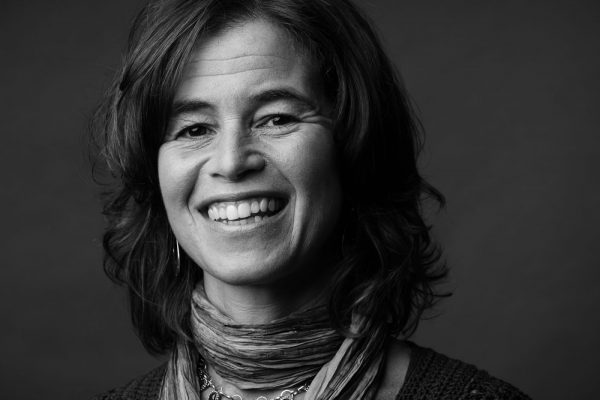75 minute listen
Manchester
Meryl Levin definitely took the road less traveled when moving from Manhattan to Manchester, NH, she exchanged her photojournalism boots for educator flats. In this podcast, Meryl shares her wisdom gained by creating and founding the Mill Falls Elementary School, New Hampshire’s first public Montessori School. Meryl’s path to entrepreneurship wasn’t traditional – it wasn’t even part of her plan! But as all entrepreneurs know, when you run a business, there are a lot of lessons to be learned. You can listen in to her generously and candidly sharing them here with us in this one-on-one (very) personal interview.
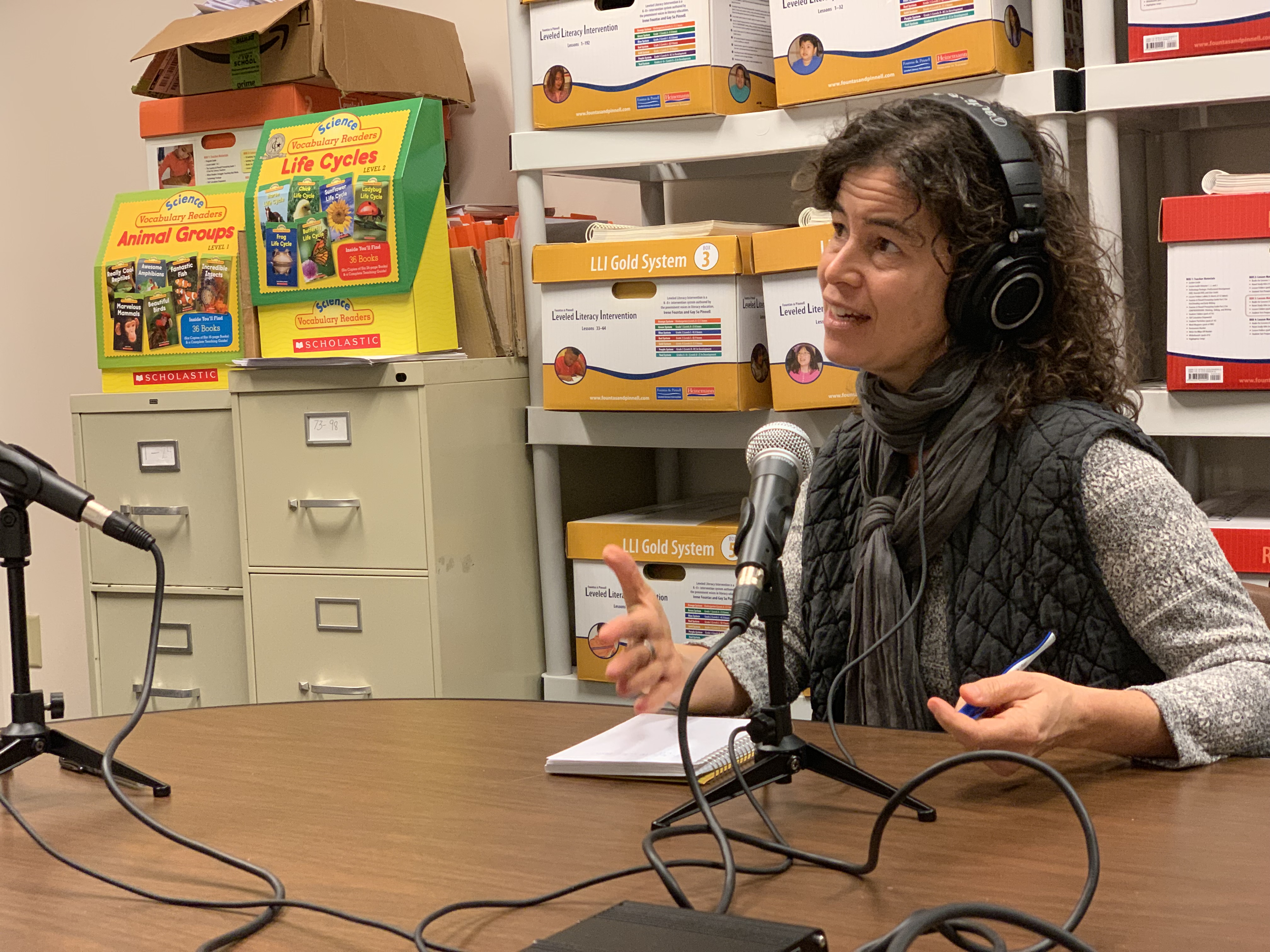
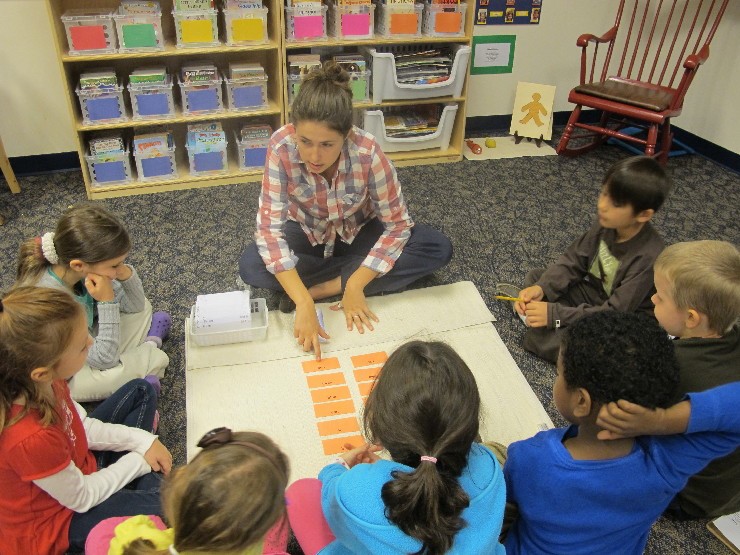
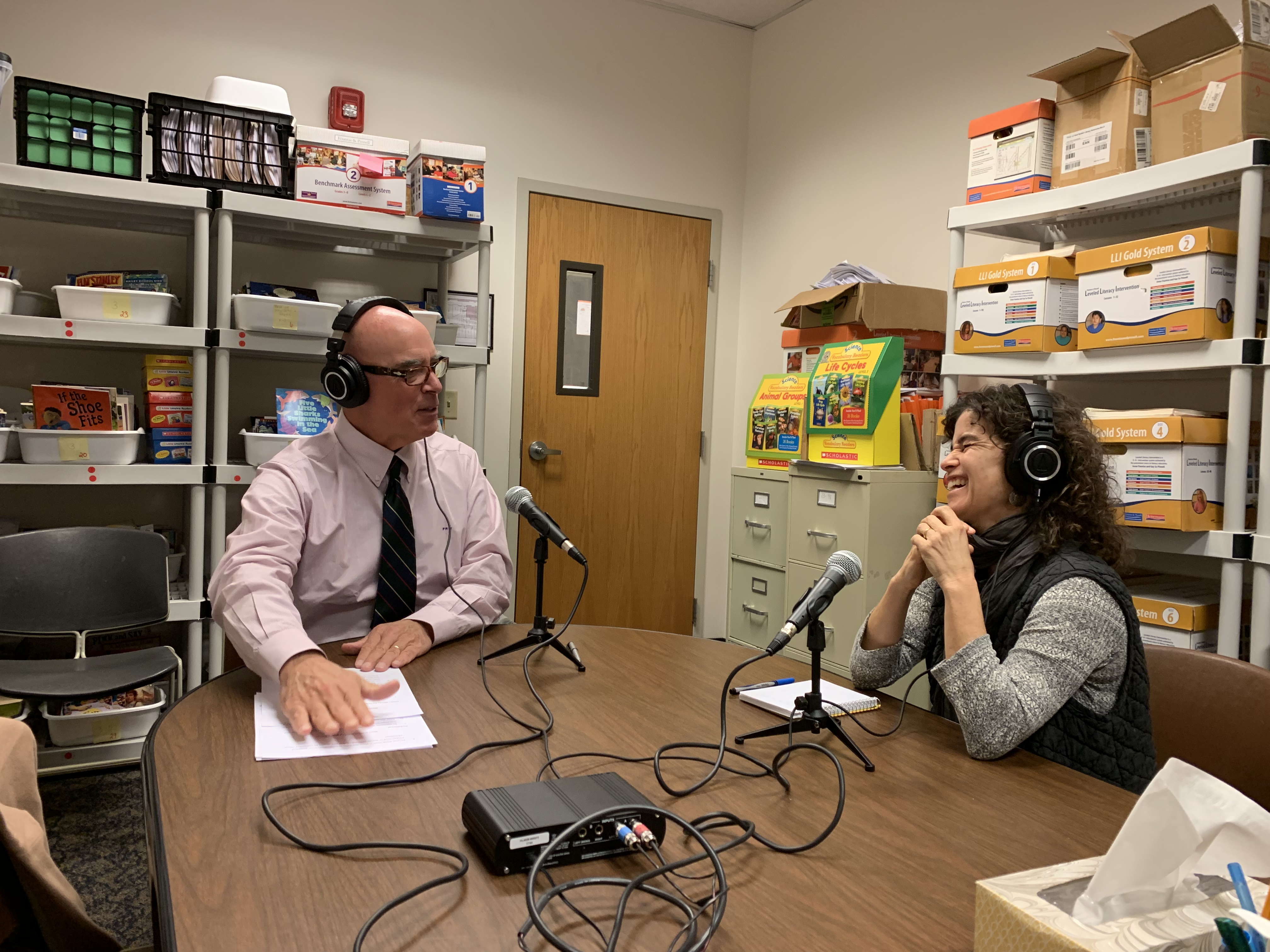
What I am Reading / Listening to
Mind-Body Problems: Science, Subjectivity, and Who We Really Are (2018), John Horgan.
John Horgan is a well-recognized and highly-acclaimed science writer who takes on the Mind-Body Problem, or what philosopher David Chalmers calls “the hard problem of consciousness.” The result of his scholarly journey is this important work: Mind-Body Problems: Science, Subjectivity and Who We Really Are. It’s based on a series of interviews with prominent thinkers (all with uber colorful backgrounds) each of whom have consented to reveal their very personal narratives to Horgan.

Each chapter focuses on the professional and individual lives of nine mind-body experts. They include: Neuroscientist Christof Koch, Cognitive Scientist Douglas Hofstadter, Child Psychologist Alison Gopnik, Complexity Theorist Stuart Hoffman, Legal Scholar Elyn Saks, Philosopher Owen Flanagan, Novelist Rebecca Goldstein, Evolutionary Biologist Robert Trivers and my personal favorite, the exceptional and dazzling Economist Deirdre (formerly known as Donald) McCloskey. We get a chance to listen in to Horgan’s personal candid interviews of their years of (sometimes painful) struggles, professional disappointments, some tragic bereavements, frequent flashes of sheer brilliance, and the delights of intellectual insights.
When Horgan was asked “Why name this Mind-Body Problems (with an “s”), why not Mind-Body Problem?” he answered:
“Because there are lots of mind-body problems, like consciousness, free will, our sense of right and wrong, the meaning of life. Also we all face our own private version of the mind-body problem, because we all have different minds and bodies and lives, so we have to find our own solutions. You might say there are as many mind-body problems and solutions as there are individuals. Hence, Mind-Body Problems, with an s.”
Horgan, who is the author of over twenty best-selling books—his most well-known being The End of Science—became sufficiently disgusted with the bureaucratic bog that is the current publishing industry that he self-published this book. You can order it on Amazon, or you can just read it online for free right here: https://mindbodyproblems.com/.
No one will be surprised that I loved this book.
Entrepreneur Owner-Manager Quote
“If you're explaining, you're losing.”
-Allison Hooper, former Co-founder and Chief Executive Officer of Vermont Creamery, Inc. as you think through your brand message.
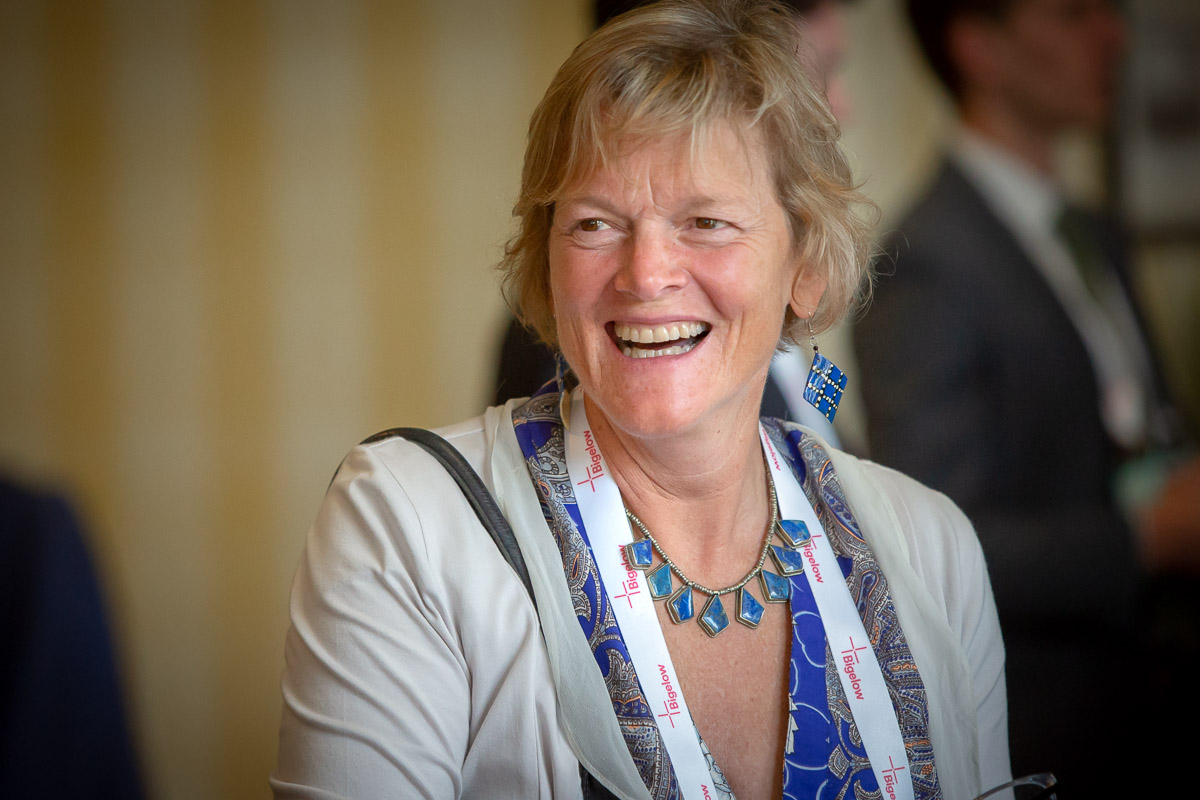
Energy Creation
This piece was contributed by Paul LeBlanc, the President and CEO of Southern New Hampshire University (SHNU), the largest private not-for- profit university in the U.S. Pete Worrell serves as a member of its Governing Board. This article was edited by Pete Worrell for brevity.
Confronting Racism, Past and Present
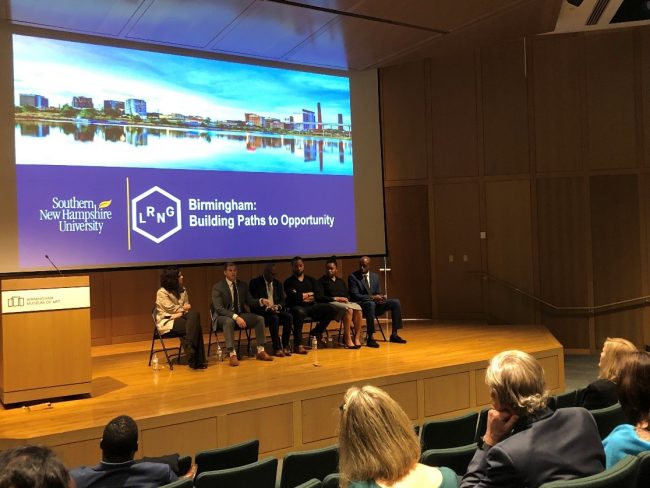
Panel at SNHU Board Trip to Birmingham, AL
Our Board of Trustees meets in mid-winter for what we have called a “learning retreat,” going with my leadership team to a place where we can expand our thinking, to learn from some other area of work or industry, and to engage with thinkers and doers in other fields. One year it was Washington, DC, where we did a deep dive into policy. Another year it was Silicon Valley to engage with new technology. Last year it was LA, where we visited SpaceX, heard from experts in entertainment, and met with Mayor Eric Garcetti. This past week we went to Alabama, to the cradle of the Civil Rights Movement in Montgomery and Birmingham, a fitting place to think hard about diversity, inclusivity, and equity. For most of us, maybe for all of us, it was the single most powerful experience of our time at SNHU.
I’m still processing why it was so. Almost everything we learned we knew at some level, intellectually, but this felt more visceral, often like a punch to the gut and a clasping of the heart. We know that the gun violence of a place like Chicago is out of control and exacting a terrible toll on the children and young people who live in what is effectively a war zone on American soil, but then Arne Duncan joined us with a group of the young men from his Chicago CRED program (a program which aims to achieve a transformative reduction in Chicago gun violence) and we heard the reality of their lives. (Arne Duncan is the former Secretary of Education for the United States under the Obama Administration).
Arne’s program in Chicago aims to give young men an alternative to the violence and the only employment available to them, gangs, through work pathways. Billy, the learning coach for CRED, who had served twenty years for the murder of one of Arne’s best friends and the basketball hope of the neighborhood (a story told in ESPN’s 30-on-30 episode “Benji,” in which Billy appears) made a simple and yet deep insight: if you live in a war zone and fear for your life, you carry a gun. If your little sister is going hungry and there is no work, you do whatever it takes to get money to buy food. If you live with incessant fear and hopelessness, you self-medicate through drugs or alcohol. These are rational choices when seen through that lens. Arne and others doing the hardest work imaginable in the hardest places in our country are trying to create hope and a different set of rational choices.
We spent time with our colleagues in Birmingham, one of our first urban eco-system learning pilot sites and had a panel with the amazingly talented team Mayor Woodfin has assembled to address Birmingham’s challenges, including a similar wave of gun violence in the city’s poorest neighborhoods. In Birmingham, we are working to create educational pathways to work through LRNG, our newly acquired community impact group.
While in Birmingham, we visited the sacred ground that is the 16th Street Baptist Church where, in 1963, white supremacists planted a bomb that killed four little girls.
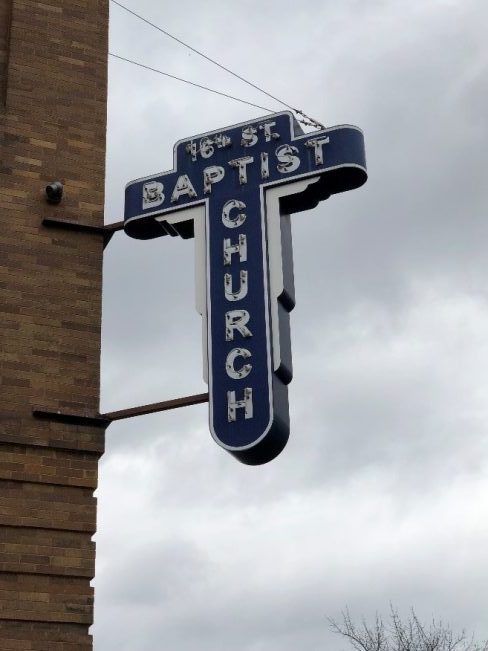
16th Street Baptist Church
In this storied church, the heroes of the Civil Rights Movement met (and often preached): Dr. Martin Luther King Jr., the resolute Fred Shuttlesworth (an amazing man who is not as widely known as he should be), and Ralph David Abernathy, and it was where the 1963 Children’s Crusade was organized.
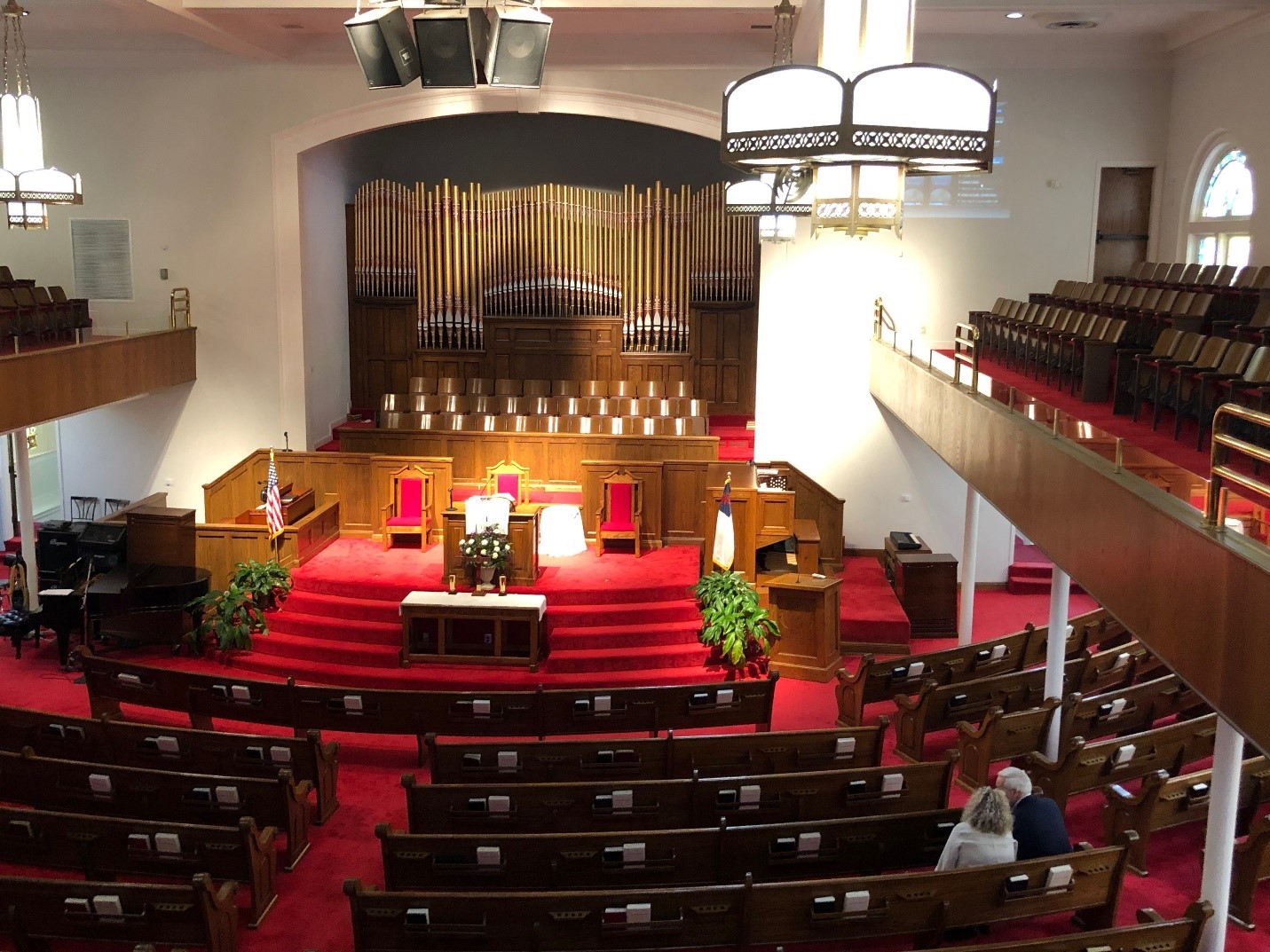
Inside the 16th Street Baptist Church
We have all read about the heroic struggle for equal rights, but there was something about being in the place that was incredibly powerful. One feels a kind of gravity, the weight of a history that suddenly feels less distant or abstract. It was a feeling I’ve had on the battlefields of the Somme or in the Killing Fields of Cambodia—the presence of those who haunt these places. It was true of Kelly Ingram Park, right across the street from the church and the site of the demonstrations where Sheriff Bull Connor had dogs released and fire hoses used on marchers.

Statue of police brutality against marches in Birmingham, AL
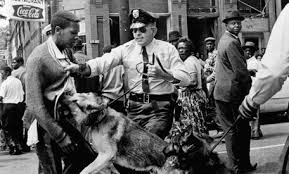
Newspaper photo of dogs attacking marchers in Birmingham, AL
The images from the church bombing and the brutal repression of the marchers made headlines worldwide, sparking outrage across the U.S., and led to the passage of the Civil Rights Act of 1964. Voter suppression and an ongoing attempt to undercut the act, including demonstrably false charges of widespread voter fraud, are stark reminders that the most basic civil rights remain under threat even after all these years.
If there was any doubt of that fact, it was shattered by our visit to the newly created National Memorial for Peace and Justice, a stunning memorial to all those killed by racial terror, including thousands of lynchings, in the 19th and 20th centuries. It is the first time I’ve seen in the U.S. a formal coming to grips with the racial hatred of our past in the way one sees in Berlin, which lays bare its guilt around the Holocaust.
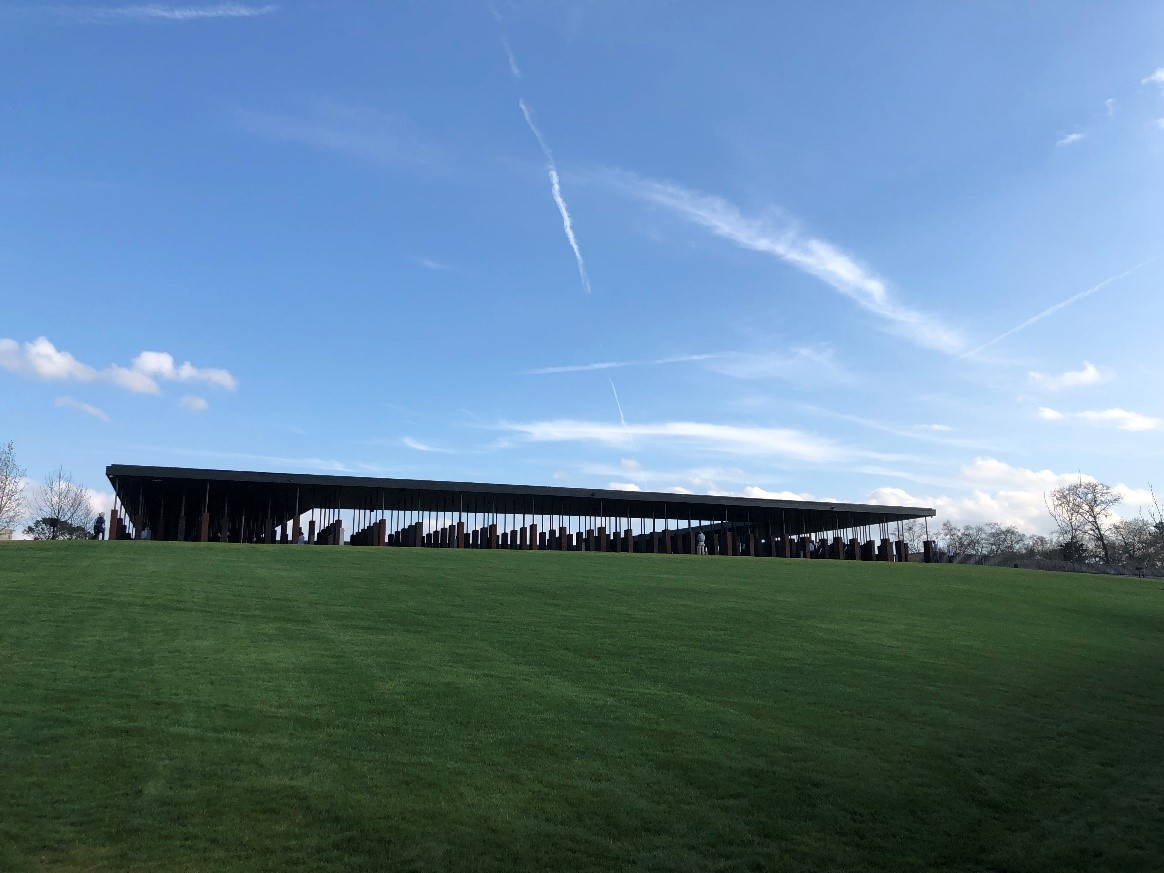
Exterior view of the National Memorial for Peace and Justice
Every metal piece, reminiscent of tombstones, represents a county and the names of those murdered there. While they are mostly from the southern states that enslaved people, New York, Oregon, California, and Illinois are among the northern states also represented. Racism knows no state boundaries in America then or now.
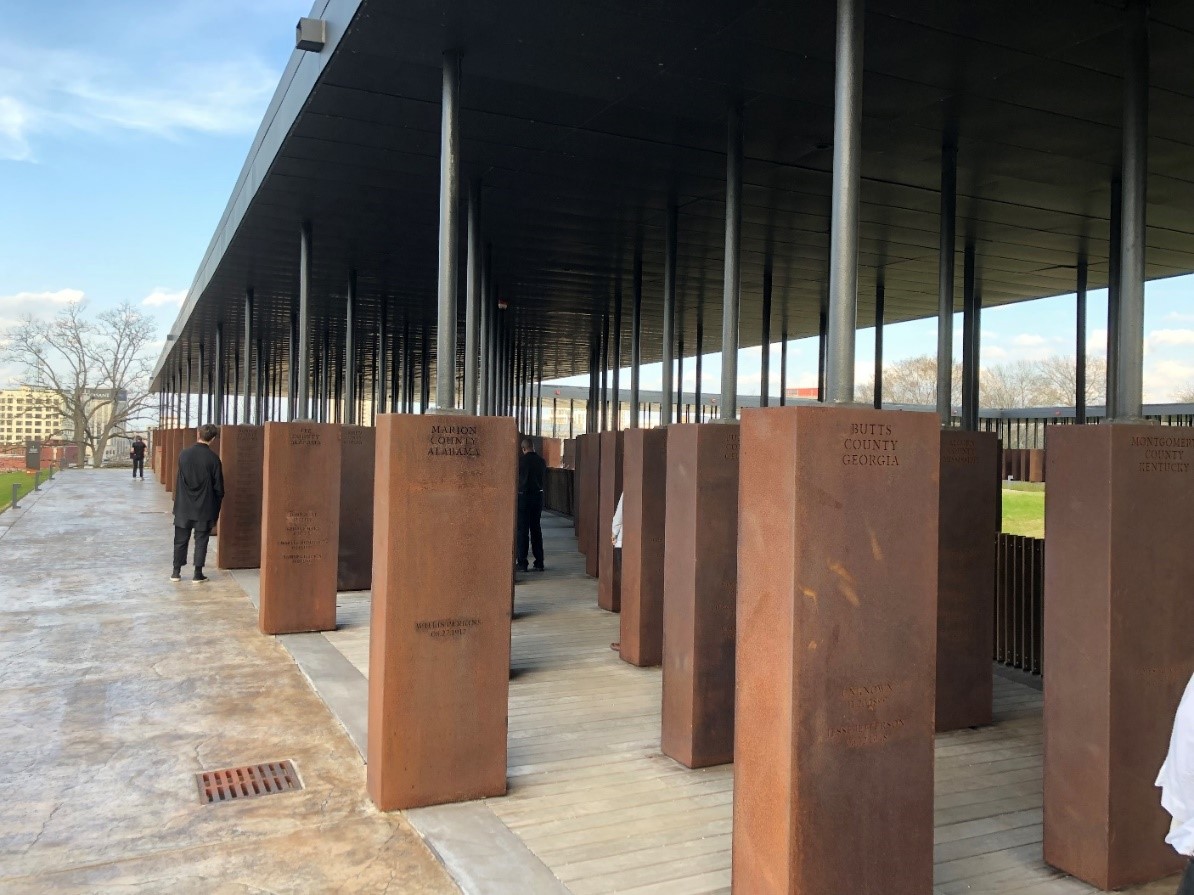
Closer view of the Memorial for Peace and Justice
The “crimes” for which people were murdered are shocking.
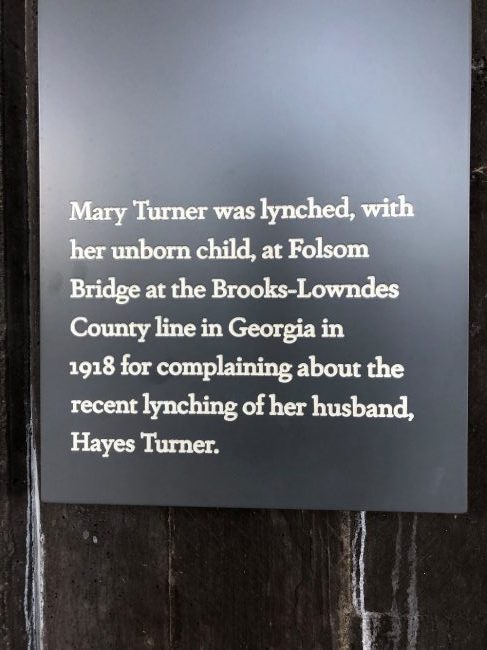
One description of "crimes" denoted in the Memorial

Another detail of a "crime" punished.
Lynchings were not rare. The Memorial is stunning in visually and physically capturing the scope of the multi-decade terrorism that created a mass migration north, an ethnic cleansing in today’s parlance.

A beautiful representation of an ugly time in America at the National Memorial for Peace and Justice
Lest we take some comfort in the notion that these were the acts of some small, psychotic group of terrorists, the nearby Legacy Museum reminds us that thousands of people would turn out to see the violence, bringing children and whole families. Postcards were made and sold. As Bryan Stevenson would remind us, the perpetrators of this systemic terror were not just the uneducated and backward. Complicit were the best educated politicians, business people, clergymen, and yes, academics. And that history is not so distant, extending into my lifetime.
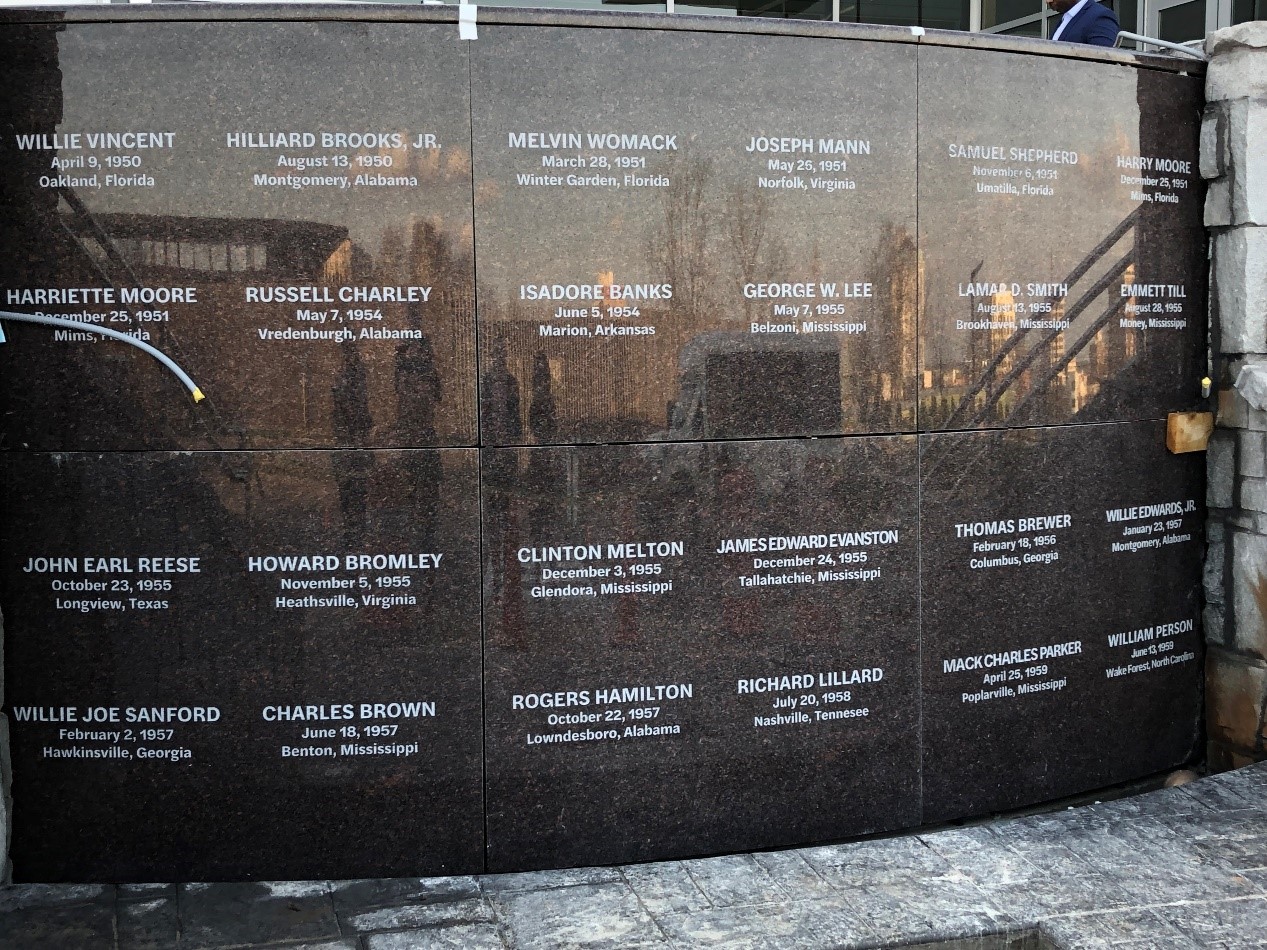
The wall at the Memorial for Peace and Justice
The Memorial and the Legacy Museum were the brainchild of the aforementioned Bryan Stevenson, the crusading lawyer and author of Just Mercy (which everyone on the trip read). Founder of the Equal Justice Initiative, Bryan has fought against the death penalty (which overwhelmingly reflects racial bias in its application) and mass incarceration. The Museum draws a clear and unequivocal line from slavery to racial terror to mass incarceration and a deeply racist criminal justice system. Later that evening Alabama put another Black man to death, a jarring and vivid reminder that the injustice remains that close.
Bryan met with us and gave a talk that was at once enraged and inspired. The MacArthur Prize winner was an inspiration, a master storyteller, and reminded us that however hard the challenges are today, they pale in comparison to the fights and the suffering that was endured
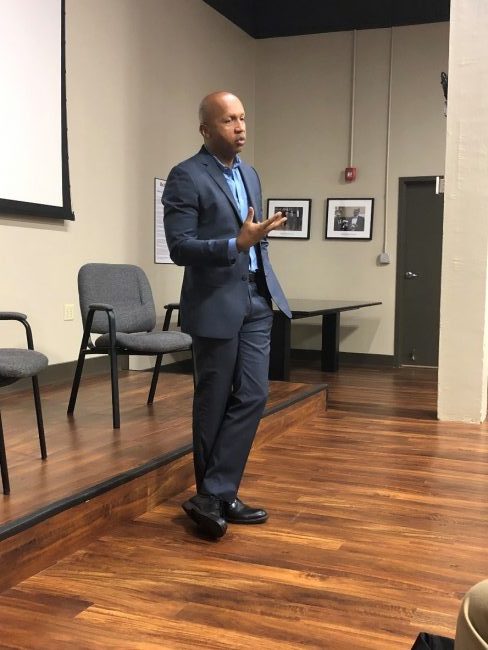
Bryan Stevenson
by those who came before and that it is to them that we have a responsibility to continue the struggle for civil and human rights.
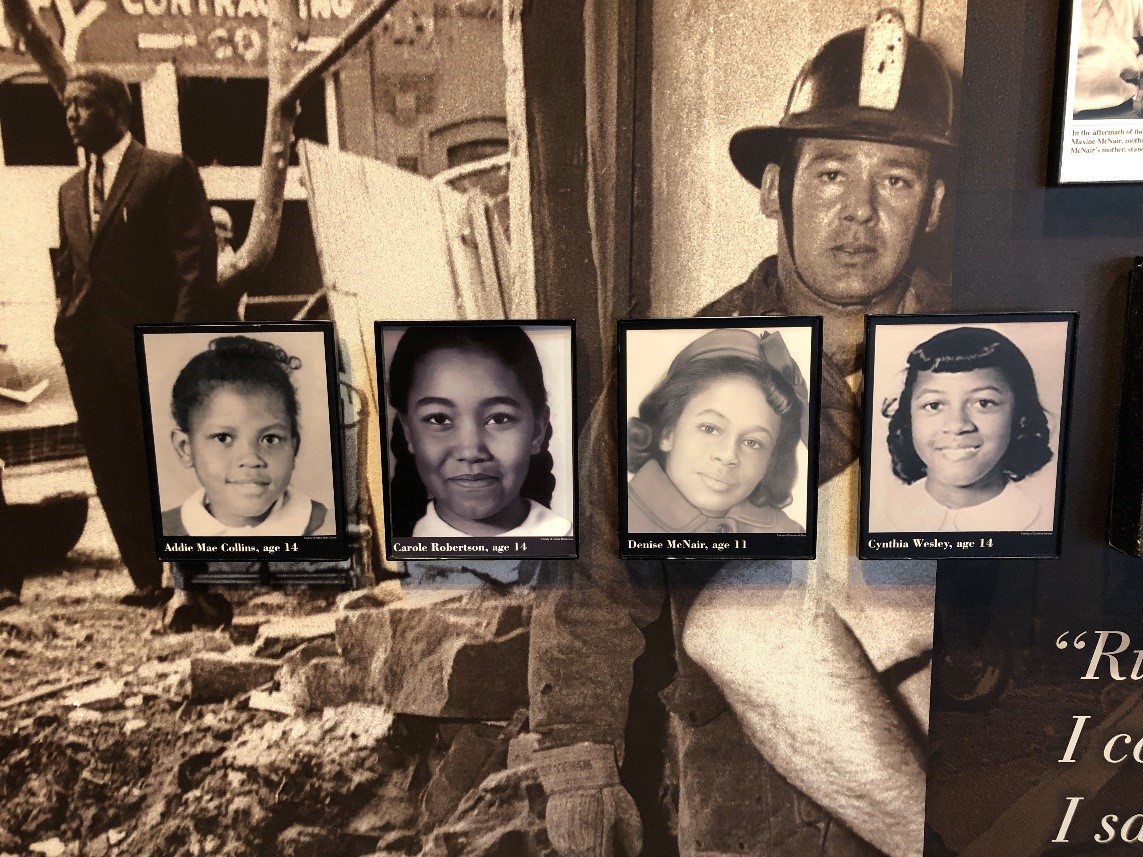
Four of the victims of racial violence
It’s how we honor their sacrifice.
Just how elevated and inspiring the fight can be was made clear to all of us when we spent over an hour with fabled Judge Myron H. Thompson, the first Black federal judge in Alabama. We sat in his courtroom, the courtroom where Judge Frank Johnson ruled in key civil rights cases, including the Rosa Parks case that struck down segregation in public transportation and the ruling that allowed the march from Selma. Judge Thompson, who has also ruled in famous cases, including Roy Moore’s Ten Commandments case and Planned Parenthood vs. Bentley, reminded us that in this melting pot of a country (some would say “salad”), it is the Rule of Law that acts as the pot, that keeps it all together. He reminded us that we were sitting in seats once occupied by Rosa Parks and Dr. King. It was absolutely inspiring and that old beautiful 1930s courtroom, witness to so much history, seemed like church.
As we walked back to our hotel, one member of my team, with tears still in her eyes, said, “I thought I knew. This was like a 2x4 to the side of the head.” At dinner, someone else said, “I’ve never cried so many times in one day, both out of sadness and inspiration.” It was against the background of these remarkable three days that the Board of Trustees unanimously approved our new Strategic Plan for Diversity, Equity, and Inclusivity. They did so because it is a superb plan (“Not one of the best I’ve seen, but the single best I’ve seen,” said one trustee), because it’s the right thing to do, because it makes good business sense. They also did it with a deep and abiding resolve that SNHU should play its part in countering this country’s long and ongoing racism and genocidal origins (I love that the Legacy Museum begins with American Indians, the far too often neglected origin story steeped in bloody genocide against a whole people), acknowledging that we have so far to go as an institution and as a country.
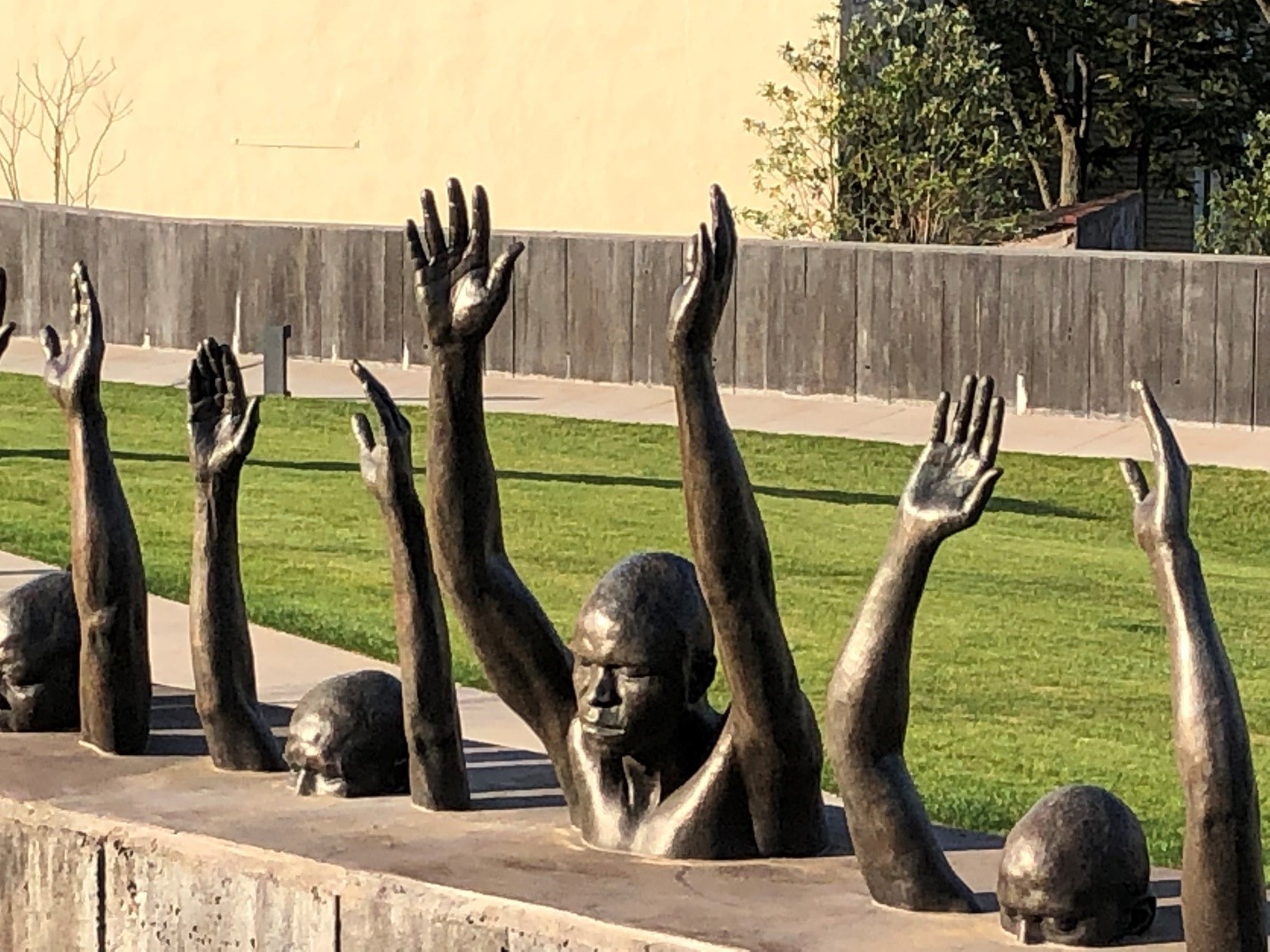
A vivid statue in memory of those who suffered racial violence and inequality
We have stark reminders that before we can have reconciliation, we need truth, as Bryan Stevenson pointed out. The truth about America’s ongoing racism is hard to bear, as all who were with us this week would attest, but it did not feel defeating. It felt freeing and empowering and humbling. As it does in so much of its work, SNHU will now put its resources into doing its part. At a time when American higher education is seen as part of the problem, we have to be part of the solution. Access is a starting point and we’ve worked hard on that part of the calculus of hope. With purpose and determination, we will now focus on equity, diversity, and inclusivity, in this great country where equality and democracy remain an aspiration and an ideal, often realized and too often denied.
If you'd like to read the full blog post, it can be found on the official SNHU President’s blog.

